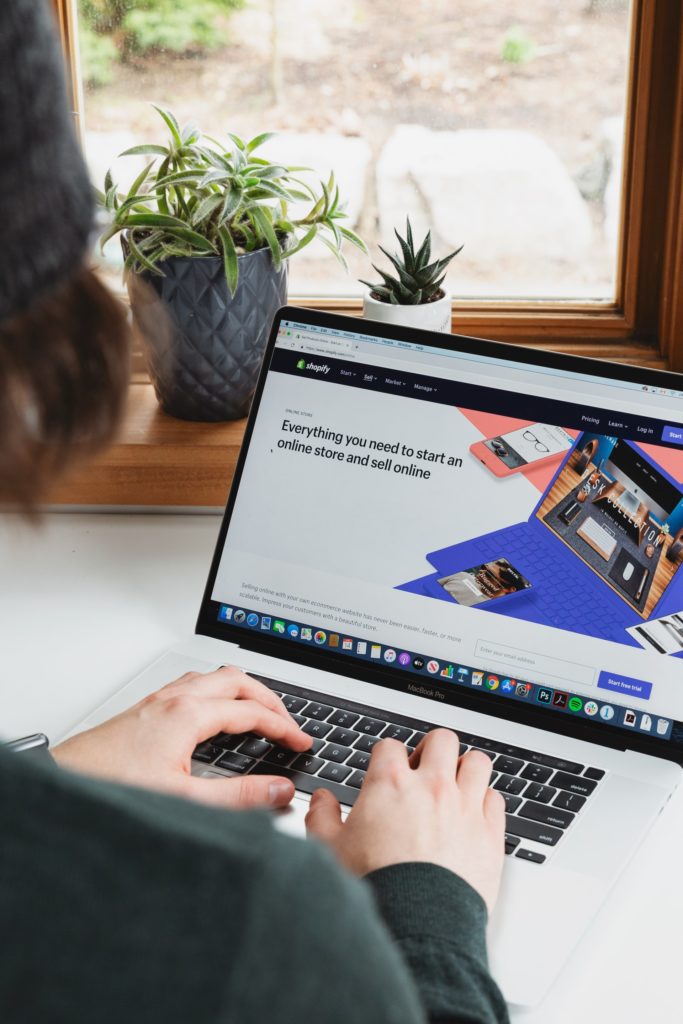Online retail sales have skyrocketed over recent years, and Shopify predicts a 276.9 percent increase in worldwide eCommerce sales by 2021. For prospective entrepreneurs, starting an eCommerce business can serve as a side hustle or a lucrative source of income. Building your own eCommerce business can be challenging—especially if you’re a first-time business owner. Here’s a step-by-step guide to building your eCommerce business, because there’s nothing more rewarding than building a business from the ground up.
Research the Basics
If you’re a first-time business owner, researching the basics of opening an eCommerce business is a must. Opening a business is a serious investment, and entering the process with knowledge can contribute to the success of your business.
It’s important to keep in mind that no single business structure works for every business—researching service-based business, physical products, and digital sales can help you learn more about what works for you.
Before you start selling products online, make sure you understand what types of business structures are available. Some eCommerce owners opt to dropship products, while others prefer to invest upfront with a wholesaling business. If you’re aiming to produce the perfect product, research white labeling, and manufacturing.
Choosing a unique business structure can make you stand out from competitors. For instance, thestore.com, a B2C eCommerce store, sells brand name products at wholesale prices. TheStore makes it easy for consumers to purchase quality tech products while saving money, giving them a significant advantage over competitors like Best Buy.
Organize Your Finances
Since opening an eCommerce business requires an initial investment, you’ll need to organize your finances before moving forward. An Employer Identification Number (EIN) is needed to open a bank business account and file business taxes.
To efficiently manage cash flow and inventory, invest in ecommerce accounting software by Fully Accountable. Accounting software means you won’t have to waste time figuring out finances—instead, a team of financial experts will offer you financial solutions to help your business grow. You’ll be able to devote your attention to the finer details of your business, and you won’t have to worry about managing day-to-day finances.
Choose Your Niche
Targeting a niche demographic might seem restrictive, but it can help you build a more profitable eCommerce business. Identifying the right niche is a critical step in opening any business. Start by researching successful companies that sell similar products and services in your industry. Be sure to choose a competitive niche—as no competition typically suggests a lack of market.
However, it’s also important not to pick an overly competitive niche, and skip any niche dominated by major brands (think sneakers and Nike). If choosing your target niche is difficult, try honing in your focus on something more specific. The more specific your focus is, the less competition you’ll face.
Build Your Brand
After choosing your business model and niche, it can be tempting to move straight to product selection. But before you start selling products, you’ll need to build a strong brand and persona. As a business owner, you can’t expect potential customers to purchase your product if you don’t know who your customers will be. Take some time to decide what your business represents and who your ideal customers are. Crafting the perfect brand image will help you market your eCommerce store and build a loyal customer base.
Start with choosing a brand name and creating a website, ensuring that your brand image is consistent throughout. Choose the colors of your brand, the imagery you plan to use, and the fonts you’ll use throughout your website. If your budget allows, consider hiring an SEO professional or a marketing firm to help add credibility to your brand.
Product Selection
Now that you’ve built your brand and created a website, you can start brainstorming product ideas. To keep it simple, come up with one product idea. A single product idea means you’ll invest less initially, and you’ll be able to test your market with affiliate marketing if you decide to sell more products.
To maximize your profits, test products carefully before investing. If you choose a dropshipping business structure, you still must test the product before marketing it. Testing the product can help you identify any potential issues and answer frequently asked questions from customers.
Whether you’re a first-time business owner or an experienced entrepreneur, following this guide can help you build a successful eCommerce store from scratch.

